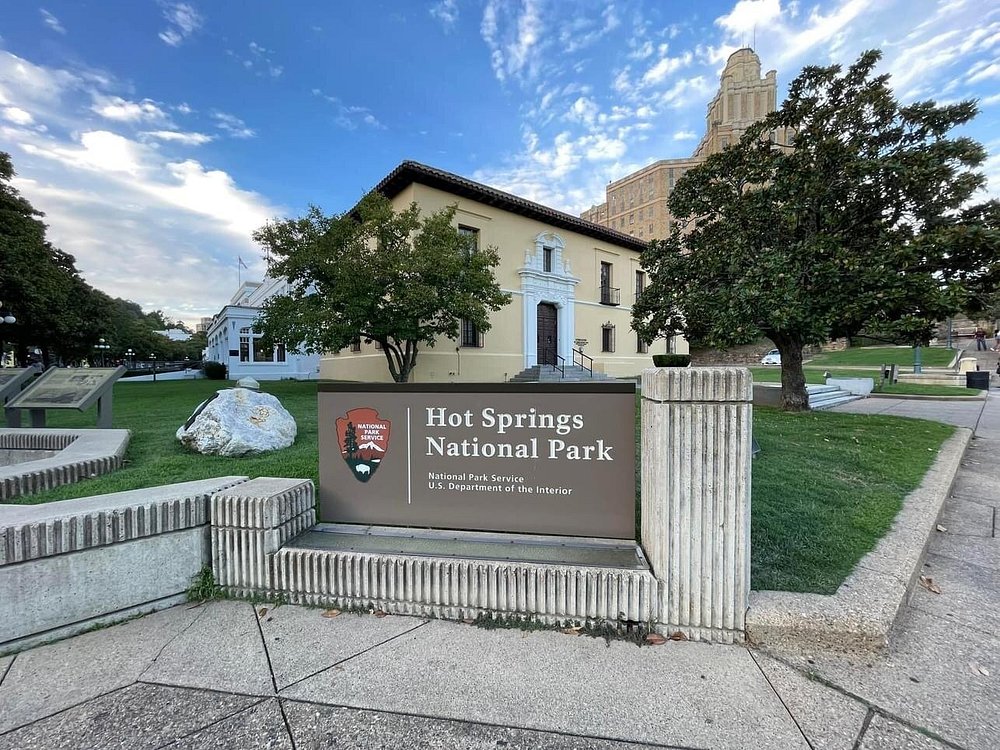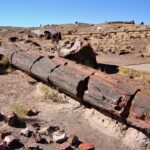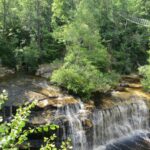Quick Bits:
Hot Springs National Park stands out as one of the oldest protected lands in the United States. Nestled in the heart of Arkansas, this park blends natural beauty with a deep connection to health and wellness. Known for its therapeutic waters, historic bathhouses, and winding trails, it offers a rare mix of urban convenience and wild escape.
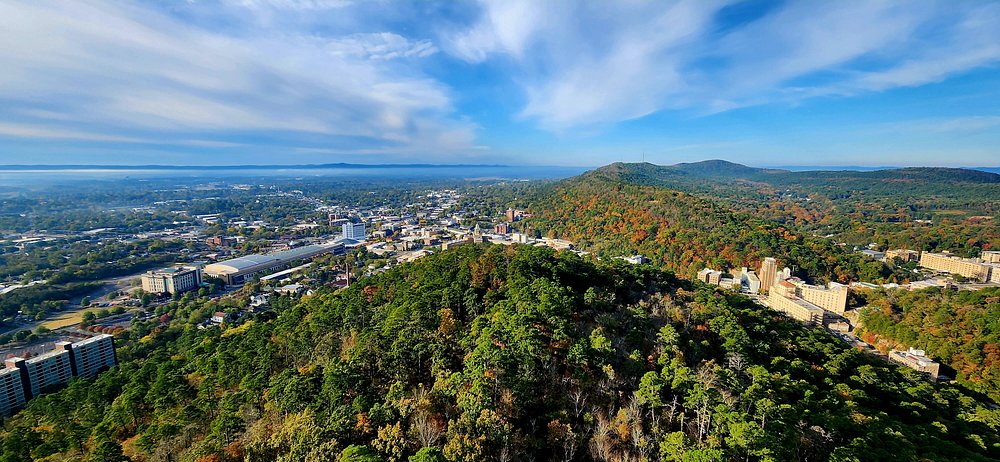
Key Highlights
- Located in central Arkansas within the city of Hot Springs
-
Home to 47 hot springs flowing from Hot Springs Mountain
-
Features eight historic bathhouses on Bathhouse Row
-
Established as a federal reserve in 1832, later named a national park in 1921
-
Offers hiking, scenic drives, thermal bathing, and cultural heritage
-
Open year-round with seasonal events and ranger-led tours.
General Information
Hot Springs National Park holds a unique title. While most national parks preserve wilderness far from cities, this one thrives inside an active town. It surrounds downtown Hot Springs, offering trails, hot spring access, and historic structures just steps away from modern shops and restaurants.
The park spans over 5,500 acres, blending forested hills with architecture that dates back to the early 20th century. Managed by the National Park Service, it provides modern-day explorers with a glimpse into America’s spa culture of the past.
Key details include:
-
Established: March 4, 1921 (as a national park)
-
Location: Garland County, Arkansas
-
Park Size: 5,550 acres
-
Annual Visitors: Over 1.5 million
-
Entrance Fee: Free for all areas, including trails and scenic drives.

Geography Information
The terrain surrounding Hot Springs National Park rolls across the Ouachita Mountains. Unlike sharp peaks found in other ranges, these mountains are worn and gentle, shaped by time and erosion. The land is rich in quartz, novaculite, and other geological gems.
Water from the springs begins its underground journey as rain, slowly filtering through layers of rock for over 4,000 years. When it resurfaces, it reaches temperatures of about 143°F. This ancient water, rich in minerals, emerges clean and hot—ready for soaking, bottling, or cooling for public fountains.
Important geographical notes:
-
Ouachita Mountains: Among the few U.S. ranges that run east to west
-
Hot Springs Mountain: The park’s thermal hub
-
Geology: Layered sedimentary rock, heavy in silica and novaculite
-
Water Source Depth: Over 8,000 feet below the surface.

Places to Visit
🔹Bathhouse Row
A historic promenade of eight unique bathhouses. Two are active—Buckstaff and Quapaw—offering traditional and modern spa treatments. Others, like the Fordyce, serve as museums or visitor centers.
🔹 Hot Springs Mountain Tower
Rising 216 feet, this steel observation tower offers panoramic views of the park and surrounding forest. A favorite for photography and sightseeing.
🔹 Grand Promenade
A half-mile paved walkway behind Bathhouse Row, perfect for a morning stroll. It offers views of stone terraces, fountains, and shaded benches.
🔹 Gulpha Gorge Campground
Tucked between pine-covered slopes and a mountain creek, this campground includes 40 sites, all with modern hookups and restrooms.
🔹 Goat Rock Trail & Sunset Trail
For hikers, these trails provide unforgettable views. Sunset Trail is the longest at 10 miles and circles much of the park’s upper ridges.
🔹 Hot Water Cascade
A small yet dramatic waterfall fed by thermal spring runoff near Arlington Lawn. One of the most photographed spots in the park..

Yearly Climate
Hot Springs National Park experiences all four seasons. Each one adds a new layer of charm to its forests, trails, and springs. The climate supports long, green summers and cool, comfortable winters.
| Season | Average Temp (°F) | Description |
|---|---|---|
| Spring | 55–75 | Mild with blooming dogwoods |
| Summer | 70–90 | Warm, perfect for shaded hikes |
| Fall | 50–70 | Crisp air, fall foliage |
| Winter | 30–50 | Quiet, good for indoor soaking |
Rainfall is evenly spread throughout the year, but spring tends to bring more wet days. Snow is rare but not unheard of. Most roads and trails remain open all year.
Best Time of Year to Visit
The best months to explore Hot Springs National Park are March through May and September through November. These shoulder seasons offer cooler weather, blooming or turning trees, and fewer crowds. Spring showcases wildflowers, while autumn colors the Ouachitas in gold and red.
Summer is popular for families. Campgrounds fill quickly, and bathhouses stay busy. If visiting in July or August, aim for early mornings or late afternoons to avoid heat.
Winter is the quietest time. Many visitors enjoy warm baths and holiday festivals without the crowds. Streets feel calm, and trails become peaceful escapes.
Top recommendations:
-
Spring: Blooming trees and wildflowers
-
Fall: Vibrant colors, crisp hikes
-
Early Summer: Lush forests, longer daylight
-
December: Holiday lights and thermal soaking.
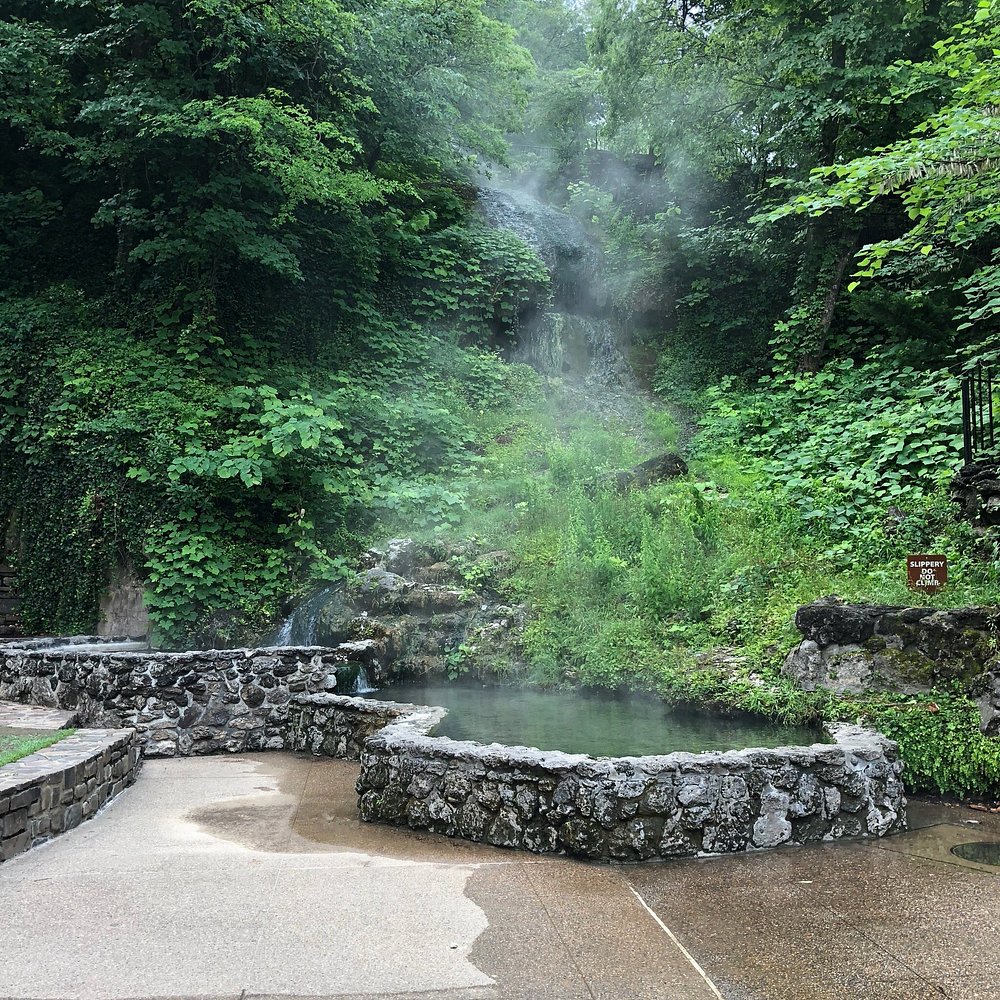
In Summary…
Hot Springs National Park is more than scenic views and bubbling water. It tells a story of healing, history, and nature’s power. From its earliest use by Native American tribes to its development into a national treasure, it remains a place where water and mountain meet.
Whether you hike forest trails, unwind in thermal pools, or explore vintage bathhouses, the experience blends past and present. Each step offers a new way to connect—with yourself, with the land, and with time.
Hot Springs National Park may be small, but its spirit runs deep. It welcomes those who wander, invites those who rest, and rewards those who stay curious.

